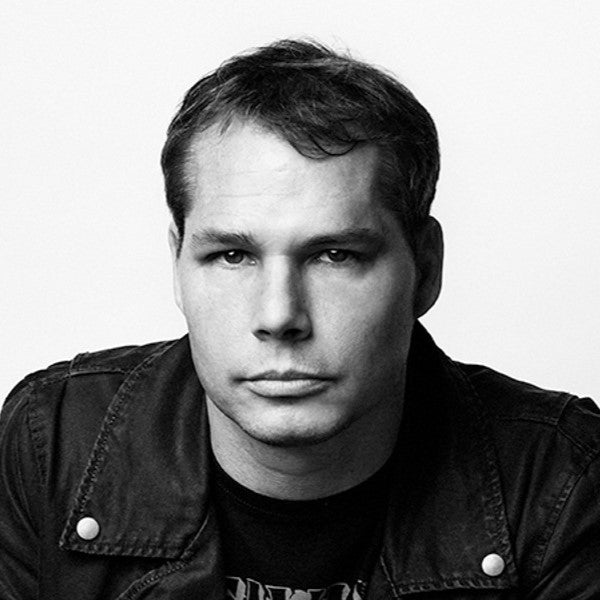Introduction
David Carson isn’t just a graphic designer—he’s the trailblazer who turned design upside down in the 1990s. With a rebellious spirit, Carson’s work went beyond the conventional, creating a gritty, emotional style that captivated a generation. Here’s how Carson turned grunge into an art form, a bit about his life beyond the page, and why his style is still inspiring today’s creatives.
The Accidental Designer: From Surfing to Shaking Up Magazines
Before becoming the design icon we know today, David Carson had an unexpected start. Born in Texas and raised in southern California, he spent his early years on the beach. Surfing was his passion, and it would be years before Carson even considered art as a career.
But in the late 1980s, Carson stumbled into graphic design—and his unconventional approach shook things up immediately. His surf culture roots meant he approached design with an entirely different perspective, one that would soon define the grunge aesthetic of the '90s. Carson was destined to break the mold, and in 1992, he found the perfect outlet for his style.
The Ray Gun Era
When Carson joined Ray Gun, an alternative music magazine, he unleashed his full creative force. His work broke every rule: bold, distorted fonts, unreadable layouts, and gritty textures filled each page, creating a magazine unlike anything else at the time. One of his most famous moves? Publishing an interview with Bryan Ferry entirely in “Dingbat” font—a font composed of symbols instead of letters—because Carson thought the interview was boring. It was unconventional, rebellious, and absolutely unforgettable.

For Carson, Ray Gun wasn’t just a magazine; it was a canvas for self-expression. Each issue felt like a scrapbook of emotions, capturing the raw energy of grunge music and 90s counterculture. His work sparked something new in the design world: an appreciation for the imperfect and the daring.


Collaborations with Major Brands
Carson’s boldness didn’t go unnoticed. Brands like Nike, Pepsi, and Microsoft reached out to work with him, eager to capture his raw, edgy style. Carson brought authenticity to these big names, infusing a sense of rebellion that made each campaign feel real, emotional, and effortlessly cool.
While many graphic designers strive for polish, Carson embraced roughness and chaos. This unfiltered approach inspired brands to appeal to younger audiences who craved authenticity, a trend that continues to influence branding today.

Life Outside Design: Surfing, Photography, and Nostalgia
Carson’s life is as eclectic as his art. A dedicated surfer since his teens, Carson credits the ocean as a constant inspiration for his work. In fact, his love for surfing led him to set up a studio in Hawaii, where he balanced his career with time on the waves.

But Carson’s creativity doesn’t stop at graphic design. Over the years, he’s developed a love for photography, capturing everyday images that evoke a sense of nostalgia. From weathered signs to forgotten graffiti, Carson’s photos reveal the same gritty beauty that defines his design work. For Carson, design and life are about embracing what’s raw and real.
Embracing Imperfection in Art and Life
David Carson’s legacy is more than just his work with Ray Gun. He pioneered a new design style, one that celebrated imperfection and emotional depth. His work reminds us that art doesn’t need to follow rules—it needs to connect with people.
For anyone on a creative journey, Carson’s story is a reminder to live authentically, break away from the norm, and find beauty in the unexpected. Whether you’re a designer, an adventurer, or just someone who loves a little nostalgia, Carson’s work is an invitation to celebrate the imperfect moments that make life beautiful.

Conclusion
David Carson’s work is more than just a collection of edgy designs—it’s a bold statement on living without boundaries. By embracing the imperfections, raw emotions, and rebellious spirit of the 90s, Carson created a style that resonated far beyond the printed page. His career is a testament to the idea that art isn’t about following rules; it’s about connecting with people on a deeply authentic level. For creatives, dreamers, and rule-breakers alike, Carson’s journey is a reminder to trust in your vision, find beauty in the imperfect, and leave your own unforgettable mark. In a world that often pushes for polish, he showed us the magic of the unpolished, the raw, and the real. Embrace that spirit, and who knows—you might just inspire the next generation.
____________
This article is part of our Innovator Spotlight series, dedicated to highlighting the biggest influences in artistic creation. Meet the other architects who helped shaped the childhoods of the 80s, 90s, and Y2K beyond:

























